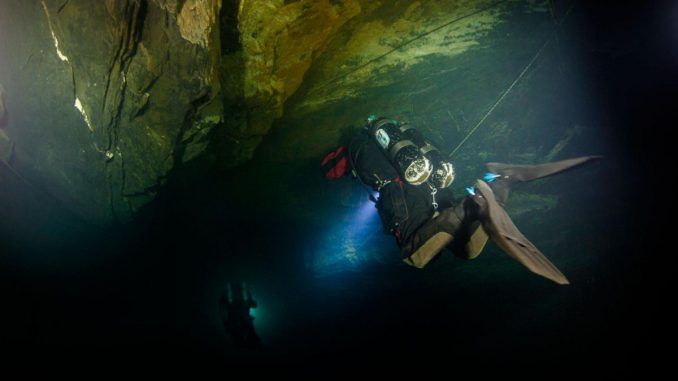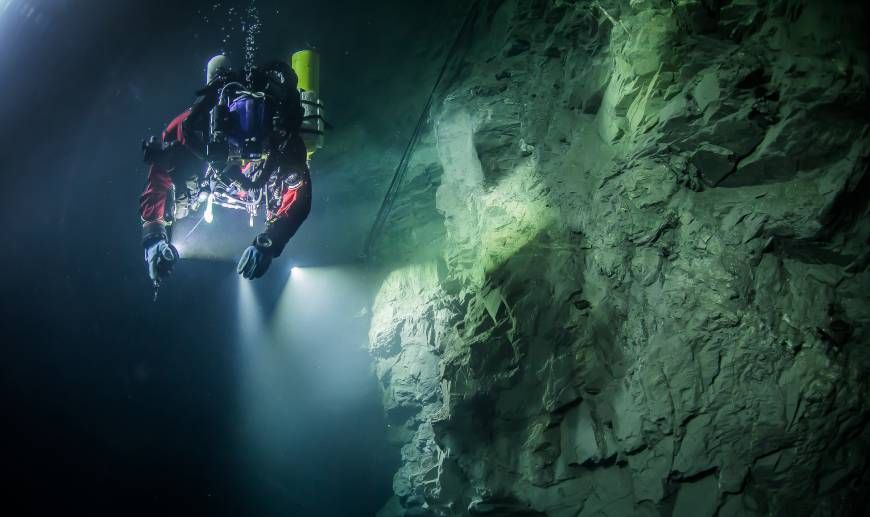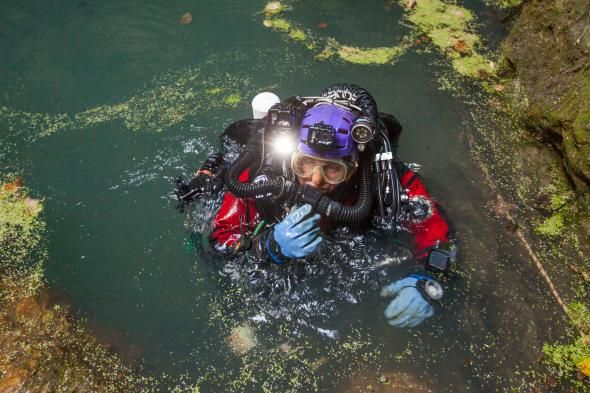
A flooded fissure in the eastern Czech Republic is the world’s deepest underwater cave, measuring at least 404 meters (1,325 feet) deep.
A team of Polish and Czech explorers discovered the flooded abyss near the eastern Czech town of Hranice using images from a remotely-operated underwater robot (ROV).
Live Science reports:
The cave, called Hranická Propast, reaches a dizzying depth of 1,325 feet (404 meters). It is about 39 feet (12 m) deeper than what is now the world’s second-deepest cave, Italy’s Pozzo del Merro.

BYPASS THE CENSORS
Sign up to get unfiltered news delivered straight to your inbox.
You can unsubscribe any time. By subscribing you agree to our Terms of Use
Polish diver Krzysztof Starnawski first explored Hranická Propast in 1999. The type of limestone formation he found led him to believe that the cave could extend a greater distance than his dives had taken him. So Starnawski led a Czech-Polish expedition to explore the cave, supported in part by a National Geographic grant, which included numerous dives over the past two years to collect more data. The limestone abyss was recently measured with the assistance of a remotely operated underwater vehicle (ROV), and determined to be the world’s deepest.
During a 2014 dive, Starnawski reached 656 feet (200 m) deep, which he believed to be the bottom of the underwater cave. However, he found a narrow opening that led to another vertical tunnel extending beyond the probe Starnawski was using to measure the cave’s depth — the line ran out at 1,260 feet (384 m), just shy of Pozzo del Merro, which measures 1,286 feet (392 m) deep. [Amazing Caves: Pictures of the Earth’s Innards]
 “He is a deep-cave diver, so he was keen to explore the deepest parts of the system,” Marcin Jamkowski, a member of the expedition team and an adventure filmmaker, told Live Science.
“He is a deep-cave diver, so he was keen to explore the deepest parts of the system,” Marcin Jamkowski, a member of the expedition team and an adventure filmmaker, told Live Science.
Returning to the cave last year, Starnawski found the narrow passage had widened and he was able to squeeze through to a depth of 869 feet (265 m). He released another probe, this time hitting “bottom” at 1,214 feet (370 m), which was likely the top of debris from the collapsed passage.
A dive on Tuesday (Sept. 27) finally determined the cave’s actual, record-breaking depth. The expedition team used ROV technology to reach the base of the cave, because depths past 400 meters are beyond the limits of scuba diving, Jamkowski said.
“There had been some dives done by the oil industry to such depths (so-called “saturation diving”), but they last approximately a month, surface to surface,” Jamkowski wrote in an email. “This can never be done in the cave like this one, so the obvious choice was to send the robot where the man can’t go.”
Once the team explored the cave’s depths, they found fallen trees, logs and branches at the bottom, suggesting the cave had changed its shape, according to Jamkowski. The configuration of the current shaft would not accommodate natural debris to fall from the cave’s entrance, he said.
They also found the cave to be surprisingly large, as it appears to follow a natural rock feature or a fault line “eaten by the hot water going from the deep spring,” Jamkowski said. The team plans further exploration and research into the cave.
Original article on Live Science.
Edmondo Burr
CEO
Assistant Editor
Latest posts by Edmondo Burr (see all)
- Police Arrest Suspect In Supermarket Baby Food Poisoning - October 1, 2017
- Seoul Secures Data From Electromagnetic Interference By N Korea - September 30, 2017
- The ‘World’s First Internet War’ Has Begun: Julian Assange - September 30, 2017


Be the first to comment